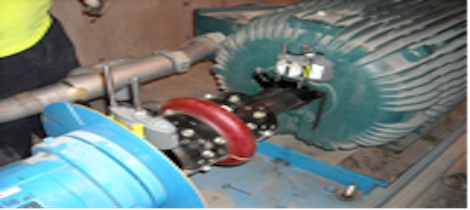There are several things that must come into play to achieve a quick and accurate alignment. One of those things is starting with a good foundation, and by foundation, I mean everything between the bottom of the machine and the floor.
So, let’s start at the bottom and work our way up.
Inertia Block or Base – The inertia block, or base, serves two purposes.
One, to give a solid, flat mounting surface for the machine. The machine may be bolted directly to the base, but often the entire machine skid is mounted to the base.
Two, to facilitate sufficient mass to support the machinery and its secondary components, such as piping and ductwork. The mass also serves to minimize unwanted vibration.
Skid or Frame – The skid should be solidly bolted to the base. Shims are sometimes used to level the base. Shims should be located under the bolts as needed to provide maximum stiffness to the frame. Bolts should be sufficiently tightened, and should be rechecked periodically, especially when the base is concrete, since shrinkage of the concrete may create gaps under the frame.
Isolator Springs – In some instances, isolator springs are used between the frame and base, especially when the machine is located “off grade” or on an upper floor or roof. The isolator springs serve to isolate any machine vibration from reaching the base, and becoming a nuisance vibration or noise issue. Isolator springs are normally sized according to the mass of the machine they are supporting, and should be adjusted to have the proper spring compression to minimize this nuisance vibration.
Motor Risers and Adaptors – These are often used to raise the motor to a height sufficient to allow the motor to be aligned to the driven machine. Make sure the adaptor is attached solidly to the frame.
When performing alignment, especially on newly-installed machinery, all of these components should be check prior to performing alignment.
- Confirm that all bolting is tight.
- Check for cracked welds.
- Check for proper isolator spring compression.
If you do not know the proper compressed height, step on the machine to see how “springy” the isolators are. If they move easily, check with your supervisor or engineering department to confirm that they are adjusted correctly.
Taking a few minutes to inspect the things that support the machine will help confirm that the machine can be quickly and accurately aligned.
If you would like more information, visit www.VibrAlign.com.





Comments